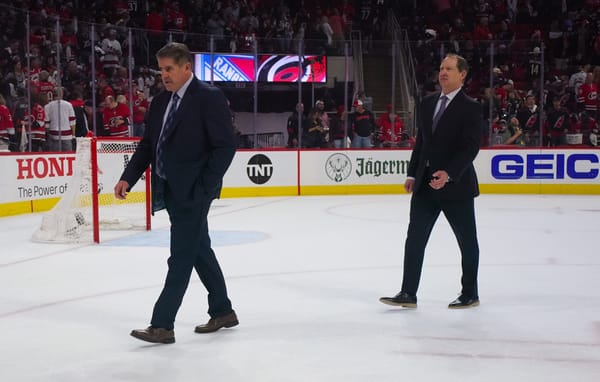Stanley Cup playoffs: With Nash scoring, what's the next gear for the Rangers?
While the Rangers won both games in Montreal to open the Eastern Conference Finals, they'll need to up their game to get past the Canadiens, and have a chance at the Cup.
While the Rangers had advanced to the Eastern Conference Finals, the team clearly had areas to improve upon after escaping two seven-game series. Rick Nash, their slumping all-star power forward, was without a goal. The power play was anemic at best. And Ryan McDonagh was still re-finding his groove after a late season shoulder injury.
Fast forward two games into this Montreal series (a small sample size) and all of those problems have corrected themselves. The power play is clicking at 40 percent. Nash and McDonagh have goals in both games, and McDonagh collected six points in the pair of contests played at the Bell Centre.
But playing content hockey at this time of the year isn't good enough—the Rangers know that—and as the series shifts to New York, the Blueshirts will attempt to not only put away Montreal, but make improvements that could lead them to hockey's grandest prize.
By not stretch did the Rangers dominant the play in Montreal, despite outscoring the Canadiens 10-3. A hot start to Game 1 and choice, opportunistic moments of Game 2 characterize the only times New York dictated the action. Beyond that, it was an aggressive group of shot blockers backstopped by Henrik Lundqvist that led the Rangers to a successful beginning of the series.
Which the Rangers know isn't good enough. Shots on goal were 41-30 Montreal, while total shot attempts were 80-44 in Game 2. The 5v5 close fenwick was just as lopsided, with Montreal at a staggering 65%.
The numbers-buster through all of this was obviously Lundqvist, who boasts a .968 sv% in the series. The 41 shots Montreal took in Game 2 were far too many for the Rangers to allow.
Zone exits, and handling forecheck pressure
Through that beginning part of Game 1, the Rangers played a much more solid game, controlling the puck, and limiting the Canadiens chances. Montreal fired six shots on goal through the first 20 minutes of the series, and the Rangers need to get back to that type of game versus the 19 shots they allowed in period three of Game 2.
When Montreal's forechecked upped the pressure, New York' zone exits were abysmal. The crisp stretch passes became turnovers, and the Rangers struggled to move the puck up ice. When Montreal applies that kind of high-pressure, it opens up the neutral zone, an area the Rangers were able to exploit early on.
This is where the likes of Marc Staal, Anton Stralman, and John Moore need to be especially good. (I'd group McDonagh in there, but he's been absolutely stellar; no reason to critique him.) It's where a defenseman needs to take a hit to make a play. Turtling to brace for a check along the boards leads to turnovers, and, sustained zone time for Montreal.
To Staal's credit, he was better as Game 2 went along. But again, if the neutral zone is going to be that wide open, the Rangers forwards simply need to circle back toward their own blue line, give the defensemen a target, and begin the transition that way. The key to cracking an aggressive forecheck is quick puck decisions, and on home ice, the Rangers need to reestablish their pace on Thursday night.

Again, the Rangers are doing many things they weren't early in this postseason, and managed to correct a few issues that certainly bode well moving forward. But as this team has quickly learned, the status quo isn't good enough when you're still playing late May into June. The product always needs to be getting better.




